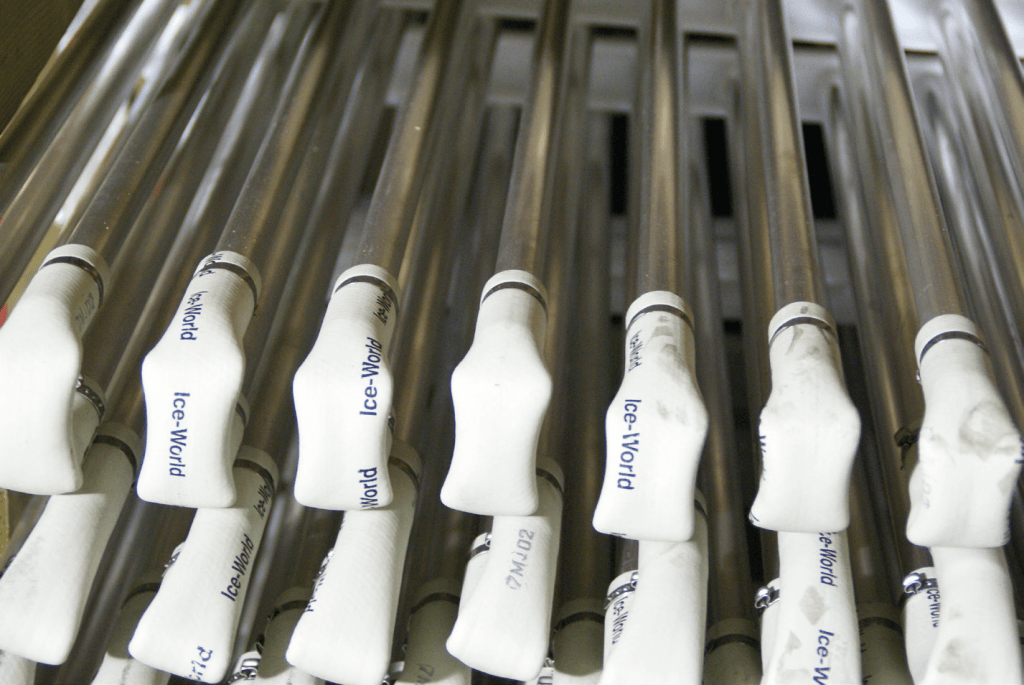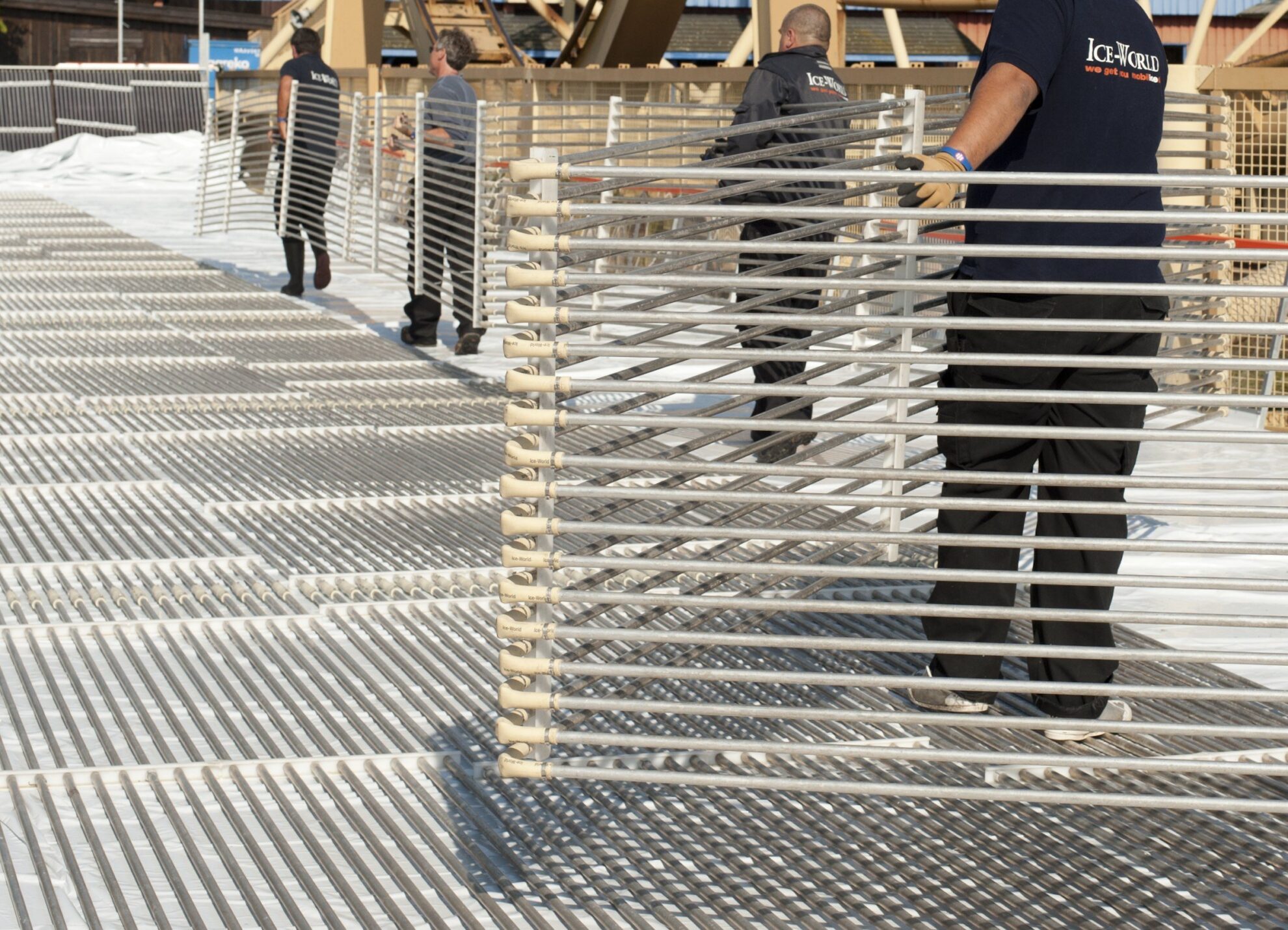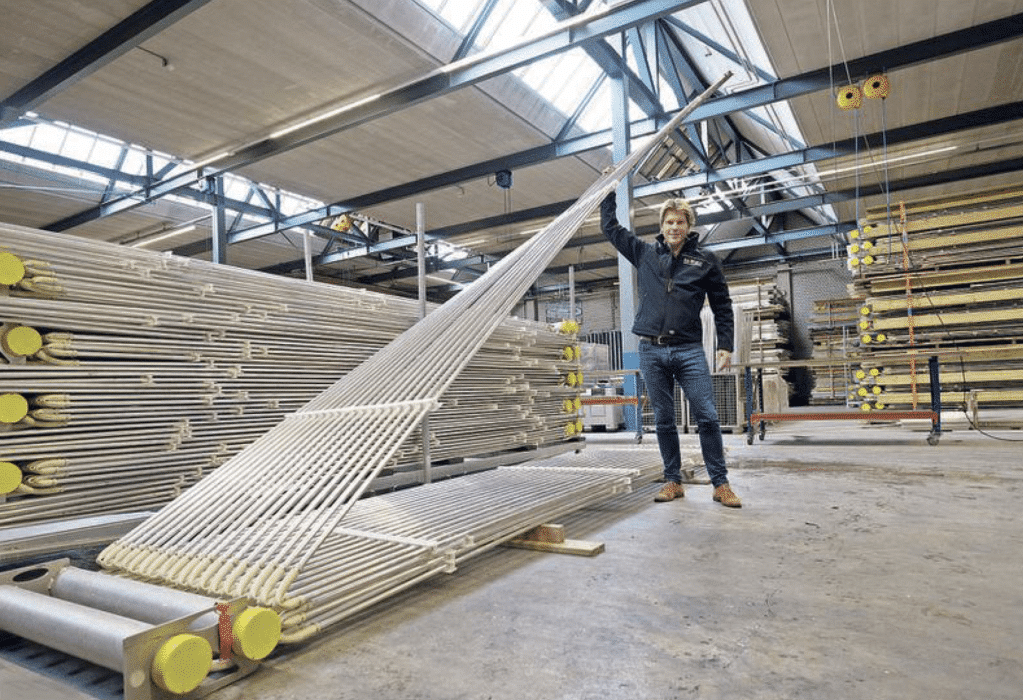Components of the ice rink system
Take a closer look at all the different components that ensure that everyone has a great time on the ice!
Components of the ice rink system
The water in an Ice-World ice rink is cooled using an environmentally-friendly refrigerant called mono-propylene glycol (or just ‘glycol’). This refrigerant flows through an open system composed of the following parts:
- A buffer tank
- A cooling machine (also known as chiller)
- A pump
- Flow and return pipes (we call these begin headers)
- Aluminium ice rink elements
- An end pipe (we call this an end header).
An Ice-World ice rink consists of aluminium elements that are connected to one another by means of small flexible rubber hoses. You can build an ice rink of any desired size by connecting multiple elements together. Because the elements can be folded into compact packages, the ice rink can be transported easily and installed quickly.
The refrigerant path
The refrigerant is pumped through the chiller, where the glycol is cooled to -10°C, from the buffer tank. The glycol is then pumped from the chiller to the connected ice rink elements through the flow pipe system.
How we make ice
Because the refrigerant in the pipes is colder than the surrounding water, this system will absorb the warmth of the water. As a result, the temperature of the refrigerant will rise to -6°C during its passage through the ice rink. When the glycol is discharged from the ice rink it will flow into a buffer tank from which it will once again be pumped through the chiller in order to lower its temperature. The cycle then repeats until all the water is frozen.
Weather conditions and the ground temperature may make it necessary to continue cooling the ice rink, even after the ice has formed. In winter, when the outdoor temperature is lower, the cooling system will only use a quarter to a third of its maximum chilling capacity. Depending on the ambient temperature it is sometimes not necessary to operate the chiller at all because the aluminium system conducts cold so well.
The advantages of aluminium
Ice-World ice rink system consists of aluminium elements. This system has several advantages:
1. Energy-efficient
The use of aluminium means, first of all, considerable energy savings. Because aluminium is a good heat conductor, warmth from the water is absorbed more easily and the water is therefore chilled faster. As a result, the ice rink uses up to 40% less energy. This is better for the environment and makes a substantial difference in operating costs.
2. Rain or shine
Exposure to the elements (wind, rain, sun) and the ground’s natural heat will always cause an ice rink to heat up. Thanks to the aluminium system the effect of the ice-chilling system produces faster and better results, making the ice less susceptible to weather conditions. As a result, the ice floor will quickly dry after a shower and the rink can remain open at ambient temperatures up to as high as 30°C.
3. No leakage
A third advantage of aluminium is that there is hardly any risk of leakage. Aluminium does not attract dirt as quickly and is sturdier than plastic, making it less susceptible to wear and damage.
4. Fast installation
Thanks to the smart construction of the Ice-World ice rink elements and the excellent chilling capacity of aluminium, the rink is often ready to be skated on within 24 hours. After all, the more days that the ice rink is open, the more profit it will generate!
Building up an Ice-World ice rink step-by-step
Would you like to know more about how our ice rinks can be made ready to skate on within 24 hours? If so, please read the article: How to make an ice rink in 24 hours.






